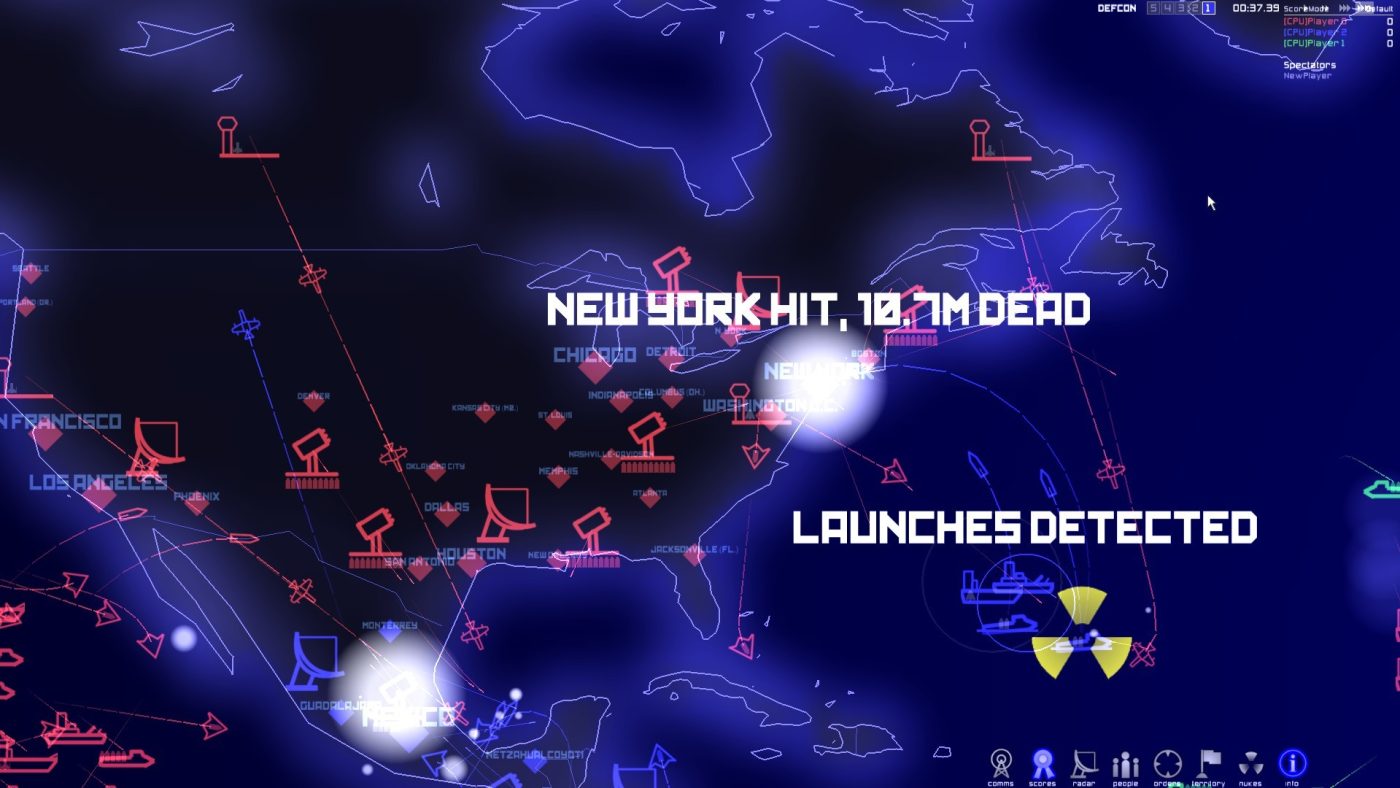In 2006, the independent video game studio Introversion Software released a title that, at first glance, appeared simplistic but harboured a profound commentary on global conflict and the ever-looming threat of nuclear war. DEFCON, a real-time strategy game inspired by the iconic 1983 film Wargames, plunges players into the chilling strategic mindset required during the Cold War era. Its minimalist design and haunting interface were not just aesthetic choices but deliberate attempts to convey a grim realism and stark warning about the potential for global annihilation.
Revisiting the Cold War
DEFCON situates its players in the tense geopolitical atmosphere of the Cold War, a period defined by the precarious balance of power and the persistent dread of nuclear warfare. The game’s setting, while not explicitly dated, resonates with the strategic doctrines and anxieties prevalent from the 1950s through the 1980s. This historical context is crucial to understanding DEFCON’s impact; it channels the paranoia and existential dread that dominated international relations during the Cold War, encapsulating it in a digital format that is as engaging as it is unsettling.
Players assume the role of a global superpower, managing their military assets and making decisions that could lead to the ultimate catastrophic event: a full-scale nuclear war. The game’s name itself, DEFCON, references the United States Defence Readiness Condition, a real-world measure of the level of threat to national security. The highest alert level, DEFCON 1, signifies imminent nuclear war, and in the game, reaching this stage often spells the end for much of humanity.
Realism and Strategy
The realism in DEFCON is not found in high-definition graphics or detailed representations of cities, but in its abstract approach to global warfare. The game’s interface is reminiscent of a radar screen, with a stark black background, neon outlines of continents, and minimalistic icons representing military units and nuclear warheads. This design choice strips away the human element, reducing populations and cities to mere numbers and targets, much like the strategic calculations made by military commanders.
The gameplay mechanics emphasize strategic thinking and long-term planning. Players must balance their offensive capabilities with defensive strategies, positioning fleets, silos, and radar installations in a way that maximizes their survivability while inflicting maximum damage on opponents. The tension escalates as the DEFCON levels decrease, simulating the increasing likelihood of conflict and the frantic decision-making required in such dire circumstances.
One of the most chilling aspects of DEFCON is the Launch button. The act of launching nuclear missiles in the game, while a strategic necessity, brings with it a sombre realization: each click signifies the death of millions. This mechanic forces players to confront the cold, impersonal nature of nuclear strategy, where human lives become secondary to geopolitical objectives. It is a stark reminder of the devastating power held by the world’s nuclear arsenals and the responsibility that comes with it.
Stark Warnings and Reflections
DEFCON is more than just a real time strategy game; it serves as a stark warning about the perils of nuclear war. By immersing players in scenarios where they must contemplate and execute nuclear strikes, it exposes the brutal reality of such decisions. The game’s abstract presentation strips away the glorification often associated with military games, instead presenting nuclear warfare in its most raw and terrifying form.
The psychological impact of playing DEFCON is profound. The game doesn’t celebrate victory in the traditional sense; even the winning player is left to grapple with the immense loss of life and the devastation wrought by their actions. This is a deliberate design choice by Introversion Software, aiming to provoke reflection rather than jubilation. The eerie music and ambient sounds that accompany the gameplay further enhance this sense of unease, reminding players of the sombre reality behind their strategic manoeuvres.
In the context of 2006, DEFCON’s release came at a time when global tensions were once again on the rise. The early 2000s saw renewed discussions about nuclear proliferation, particularly concerning nations like North Korea and Iran. By drawing parallels to the Cold War, DEFCON underscored the enduring relevance of nuclear threat and the precarious nature of global peace. It was a timely reminder that the lessons of the Cold War should not be forgotten, and that the spectre of nuclear conflict remains a critical issue.
DEFCON: Everybody Dies
Nearly two decades after its release, DEFCON continues to resonate with players and critics alike. Its minimalist design and focus on strategic realism have made it a standout title in the genre of strategy games. More importantly, its chilling portrayal of nuclear war serves as a poignant reminder of the destructive potential of nuclear weapons and the importance of maintaining global stability.
DEFCON’s legacy lies in its ability to educate and provoke thought. It presents a stark and unflinching view of the reality of nuclear warfare, where even the victors are left to reckon with the horrifying cost of their strategies. The game’s tagline, Everybody Dies, encapsulates this bleak outlook, underscoring the ultimate futility of nuclear conflict where there are no true winners, only survivors burdened with the weight of their decisions.
As a piece of interactive media, DEFCON remains a powerful tool for reflection on the consequences of our strategic choices and the fragile nature of global peace. In a world where the threat of nuclear war, though diminished, has not entirely disappeared, DEFCON serves as a crucial reminder of the thin line between peace and annihilation, urging vigilance and responsibility in the pursuit of global security.


